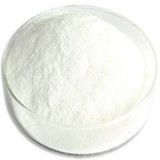 |
Carrageenan or Carrageenan Gum USP NF Grade Supplier Exporter Manufacturers' Representative |
Email: info@ammol.org |
Call Toll Free +1-855-552-6665 |
Quick Links to Products: Acacia | Brivaracetam | Calamine | Carrageenan Gum Suppliers | Gellan Gum | Guar Gum Powder Granules | Carboxymethyl Hydroxypropyl Guar or CMHPG Gum | Hydroxypropyl Guar Gum | Xanthan Gum | and more -- |
Carrageenan or Carrageenan Gum
CAS Number: 9000-07-1
Molecular Formula: Varies
Molecular Weight: Varies

Carrageenan or Carrageenan Gum
Specifications of Carrageenan USP NF Grade:
Carrageenan --- CAS 9000-07-1
DEFINITION
Carrageenan is the hydrocolloid obtained by extraction with water or aqueous alkali, from some members of the class Rhodophyceae (red seaweeds). Carrageenan consists chiefly of potassium, sodium, calcium, magnesium, and ammonium sulfate esters of galactose and 3,6-anhydrogalactose copolymers. These hexoses are alternately linked α-1,3 and β-1,4 in the polymer. The prevalent copolymers in the hydrocolloid are designated kappa-, iota-, and lambda-carrageenan. kappa-Carrageenan is mostly the alternating polymer of d-galactose-4-sulfate and 3,6-anhydro-d-galactose. iota-Carrageenan is similar, except that the 3,6-anhydrogalactose is sulfated at carbon 2. Between kappa-carrageenan and iota- carrageenan there is a continuum of intermediate compositions differing in degree of sulfation at carbon 2. In lambda-carrageenan, the alternating monomeric units are mostly d-galactose-2-sulfate (1,3-linked) and d-galactose-2,6-disulfate (1,4-linked). The ester sulfate content for Carrageenan ranges from 18% to 40%. In addition, it contains inorganic salts that originate from the seaweed and from the process of recovery from the extract.
Carrageenan is recovered by alcohol precipitation, by drum drying, or by freezing. The alcohols used during recovery and purification are restricted to methanol, alcohol, and isopropyl alcohol. Carrageenan that is recovered by drum-roll drying may contain mono- and di-glycerides or up to 5% of polysorbate 80 used as roll-stripping agents.
IDENTIFICATION
A.
Sample solution: A 20-mg/mL solution prepared by heating a uniform dispersion in a hot water bath to 80C
Analysis: Cool the the Sample solution.
Acceptance criteria: The Sample solution becomes more viscous upon cooling and may form a gel.
B.
Sample solution: Prepare as directed for the Sample solution in Identification test A.
Analysis: To 10 mL of the Sample solution, while still hot, add 4 drops of a 0.1-g/mL solution of potassium chloride, mix, and cool.
Acceptance criteria: A short-textured (“brittle”) gel indicates a carrageenan of a predominantly kappa type; a compliant (“elastic”) gel indicates a predominantly iota type. If the solution does not gel, the carrageenan is of a predominantly lambda type.
C.
Analysis: Dilute a portion of the Sample solution, prepared as directed in Identification test A, with 4 parts of water, and add 2–3 drops of methylene blue.
Acceptance criteria: A blue, stringy precipitate is formed (also positive for furcellaran, a similar colloid).
D. Infrared Absorption
To pass the test.
Arsenic: NMT 3 ppm
Lead: NMT 10 ppm
Microbial Enumeration Tests and Tests for Specified Microorganisms: The total bacterial count does not exceed 200 cfu/g, and the tests for Salmonella species and Escherichia coli are negative.
Loss on Drying: Dry a sample at a pressure not exceeding 10 mm of mercury at 70° for 18 h, cool in a desiccator, and weigh: it loses NMT 12.5% of its weight.
Solubility in Water: NMT 30 mL of water is required to dissolve 1 g at a temperature of 80C.
Acid-Insoluble Matter:
Sample: 2 g
Analysis: Transfer the Sample to a 250-mL beaker containing 150 mL of water and 1.5 mL of sulfuric acid. Cover with a watch glass, and heat on a steam bath for 6 h, rubbing down the wall of the beaker frequently with a rubber-tipped stirring rod, and replacing any water lost by evaporation. Transfer 500 mg of a suitable filter aid to the beaker, and filter through a tared filtering crucible provided with a 2.4-cm glass fiber filter. Wash the residue several times with hot water, dry at 105° for 3 h, cool in a desiccator, and weigh. The difference between the total weight and the sum of the weights of the filter aid, crucible, and glass fiber filter is the weight of the acid-insoluble matter.
Acceptance criteria: NMT 2.0% of the weight of Carrageenan taken
Viscosity–Rotational Methods:
To pass the test.
Acceptance criteria: At 75C is NLT 5 centipoises
Articles of Botanical Origin, Total Ash: NMT 35.0%
We also supply Carrageenan or Carrageenan Gum of BP Ph Eur grade.
Please visit SDS Safety Data Sheet of Carrageenan or Carrageenan Gum Suppliers.
American Molecules, also known as ammol.org is a distributor, supplier and manufacturers' representative of all types of Pharmaceuticals, Functional Ingredients, Excipients and Specialty Chemicals in Texas USA. Our principals manufacture supply and export USP NF BP, Ph Eur, etc grades of chemicals pure and reagent grade, mineral fortifiers, FCC food grade. Tailor made particle size and customized specifications are offered. The principal's facility is having one or more of the certifications like FDA approval and GLP, cGMP, ISO9001, ISO14001, ISO/IEC 17025, ISO22000, FSSC 22000, ISO45001, FSSAI, Kosher, HALAL, COPP, WHO-GMP certified and Written Confirmation (WC) for export to Europe is available. The manufacturers suppliers and exporters observe WHO Good Manufacturing Practices and Good Laboratory Practices.





Suppliers and Manufacturers' Representative:

9910 Bent Oak Dr
Houston, TX 77040, USA
Call Toll Free: 1-855-55-AMMOL 1-855-552-6665
Email: info@ammol.org